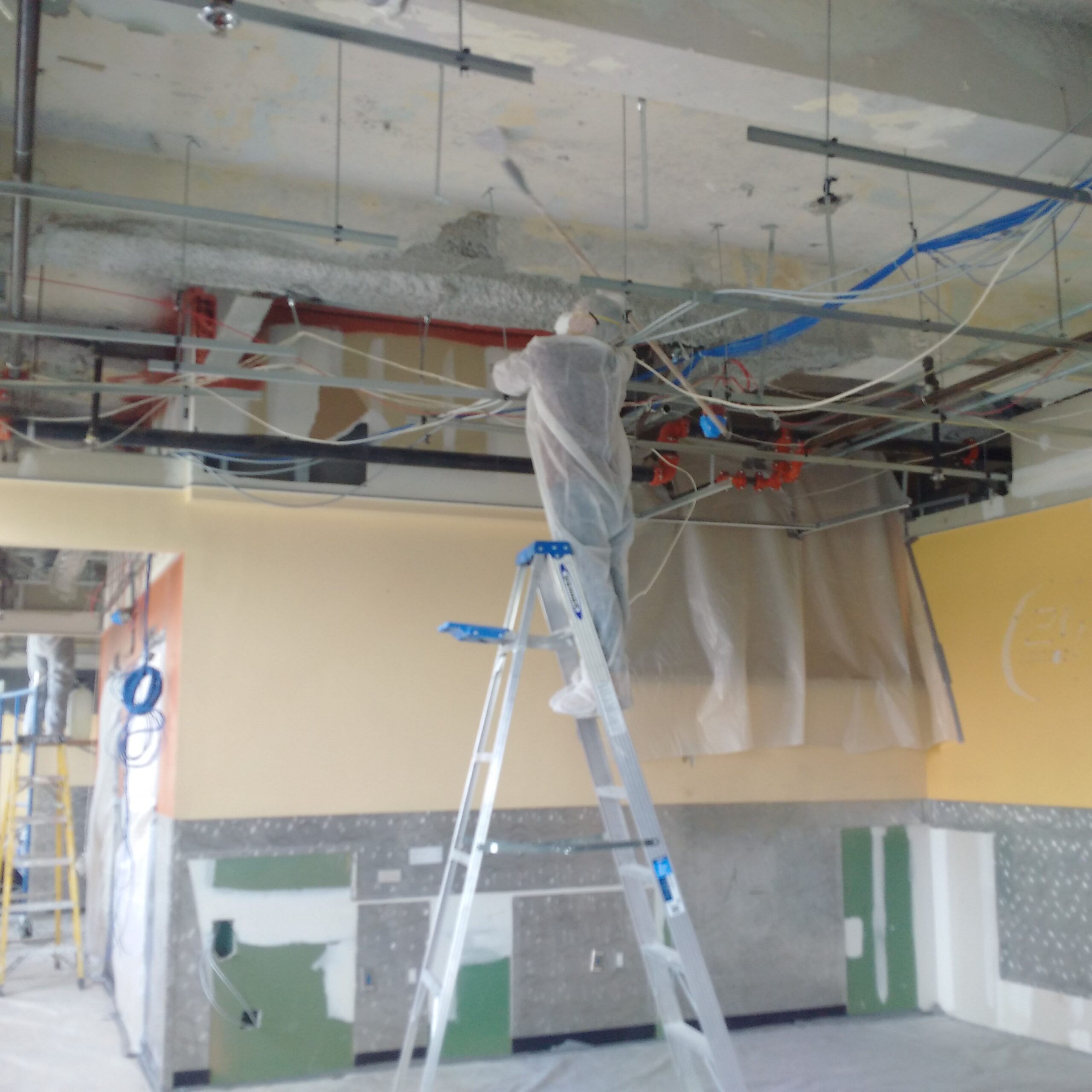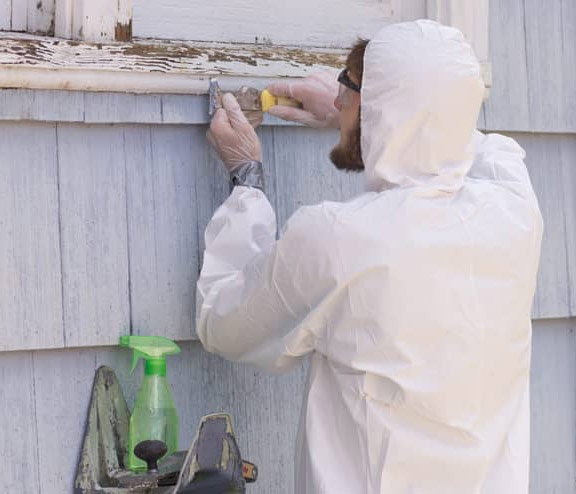Relied On Lead Paint Removal Company-- NYC's Premier Lead Reduction Service
Relied On Lead Paint Removal Company-- NYC's Premier Lead Reduction Service
Blog Article
Vital Tools and Approaches for Effective Lead Violation Cleaning
Attending to lead offenses effectively requires a comprehensive technique that mixes the right tools with calculated methods. The initial step includes gearing up employees with Personal Safety Tools (PPE) to guard their health and wellness. Simultaneously, using specialized cleanup tools, such as HEPA vacuum cleaners and lead-specific cleaner, is critical for thorough contaminant elimination. Effective containment methods, including plastic bed linen and negative atmospheric pressure systems, are important to stop the spread of dangerous products. Moreover, risk-free disposal practices and stringent adherence to regulative standards ensure liable handling of poisonous waste. However what are the nuanced approaches that truly make a distinction?
Personal Protective Tools
Individual protective devices (PPE) is a crucial component in the efficient management of lead contamination clean-up. The crucial PPE for lead cleanup consists of respirators, protective clothing, handwear covers, and eye protection.
Respirators, particularly those outfitted with HEPA filters, are important for filtering system air-borne lead fragments, avoiding inhalation. Correct fit and seal checks are important to guarantee their efficiency. Safety clothing, including coveralls and disposable fits, avoids lead dirt from adhering to workers' garments, minimizing the threat of second contamination. Gloves, typically made from nitrile or latex, secure the skin from straight call with lead, while security goggles or full-face shields secure the eyes from dust and debris.
Furthermore, rigorous training on the correct usage and upkeep of PPE is important. Workers must be enlightened on putting on and doffing treatments to stay clear of contamination. Normal examinations and replacements of PPE components are needed to preserve their protective abilities, making certain a safe and compliant cleanup procedure.
Specialized Cleanup Devices

Another important tool is the wet/dry vacuum, which can efficiently tidy up both dust and liquid contaminants. These vacuums often come with HEPA filters to offer an extra layer of safety. Wet wipes or tack fabrics are additionally essential for surface cleaning; they are specifically made to record and hold lead particles, lowering the danger of spreading out contamination.
For even more persistent deposits, specialized lead-removal cleansing representatives are needed. These representatives are created to damage down lead fragments, making them much easier to remove. Scrub brushes with strong bristles can help in this procedure, especially on rough surfaces where lead dust has a tendency to stick a lot more highly.
Additionally, encapsulants are made use of to seal lead-contaminated surfaces, avoiding the release of lead dust. These specialized paints and coverings are made to abide by numerous substratums, offering a long-lasting remedy for lead containment.
Effective Containment Approaches
Reliable control methods are critical in alleviating the spread of lead contamination during cleanup tasks. Executing robust containment techniques makes sure that lead bits do not move to untouched locations, consequently securing both workers and the environment. One primary technique is using plastic bed linen to seal infected zones. Durable polyethylene barriers can be mounted from floor to ceiling to produce a regulated job area, considerably reducing the threat of airborne lead dirt dispersal.

To enhance control, encapsulants can be related to surface areas that are not being eliminated or disrupted. These specialized finishes bind lead dirt, decreasing its find out here now accessibility for resuspension. Furthermore, all workers have to put on appropriate Individual Safety Equipment (PPE), including respirators and disposable suits, to stop contamination spread.
Safe Disposal Practices
Making certain safe disposal practices is a crucial element in the monitoring of lead contamination cleaning. Proper disposal mitigates the threat of lead re-entering the atmosphere and jeopardizing public health and wellness. The very first step is to identify and segregate lead-contaminated waste from various other materials. Safe control utilizing sturdy, watertight containers is vital to prevent splilling throughout transportation.
Transferring lead waste requires adherence to strict standards. Using certified hazardous waste providers makes sure that the materials are taken care of properly. Documents, including shows up describing the type and amount of waste, should go along with shipments to track the waste from the website of origin to its More Info final disposal destination.
Designated unsafe waste disposal facilities are outfitted to take care of lead-contaminated products safely. These facilities often utilize innovative methods such as stabilization, solidification, or chemical therapy to neutralize the lead before disposal. Landfilling in specialized, lined locations that prevent leachate from polluting groundwater is an usual technique for final disposal.
Routine training for personnel associated with lead garbage disposal is crucial to maintain safety standards and prevent unintentional exposure. By sticking to these techniques, organizations can substantially decrease the environmental and health and wellness effects connected with lead contamination.
Regulatory Compliance Tips

Adhering to regulatory compliance is extremely important in the effective implementation of lead contamination cleanup. Comprehending and adhering to federal, state, and regional guidelines ensures not just the safety and wellness of individuals yet additionally the lawful and economic health of the clean-up company. The Environmental Defense Firm (EPA) establishes stringent criteria, such as the Lead Renovation, Repair Service, and Paint (RRP) Rule, which mandates appropriate accreditation and training for specialists handling lead-based activities.
Conformity begins with a detailed evaluation of applicable legislations and laws. Organizations must stay updated on any type of legal changes, which can be helped with through normal training sessions and signing up for industry updates. Documents is another vital conformity facet; keeping detailed documents of all tasks, consisting of inspection reports, employee training logs, and disposal shows up, is vital.
In addition, involving with licensed lead assessors or run the risk of assessors makes sure that lead dangers are correctly determined and alleviated. Employers should apply making use of Individual Safety informative post Tools (PPE) and make certain that safety and security methods are purely followed. Last but not least, transparent interaction with stakeholders, including workers, clients, and regulatory bodies, will promote a culture of compliance and liability, ultimately adding to a much safer and much more reliable lead cleanup procedure.
Conclusion
Effective lead infraction cleanup necessitates the combination of specialized tools and tactical methodologies to make sure safety and security and effectiveness. Utilizing HEPA vacuum cleaners, specialized cleaning representatives, and efficient containment techniques such as plastic sheet and negative air pressure systems is essential. Personal safety tools (PPE) safeguards employees from direct exposure, while safe disposal practices and stringent adherence to regulative compliance are crucial for responsibly handling dangerous waste. Jointly, these actions dramatically minimize health risks and add to a cleaner atmosphere.
Report this page